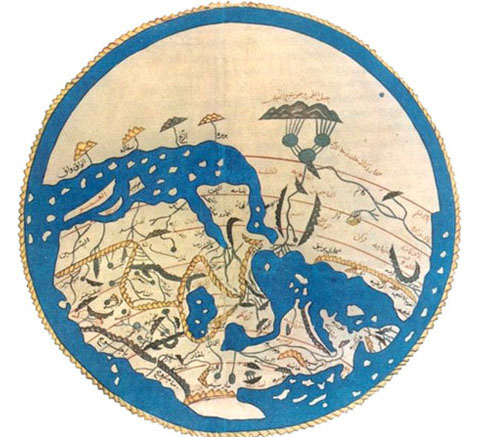Article of the Month - June 2021
“Tracing a Gypsy Mixed Language through
Medieval and Early Modern Arabic and Persian Literature”
(Kristina Richardson: Queens College &
The Graduate Center of the City University of New York)
Kristina Richardson, "Tracing a Gypsy Mixed Language through Medieval and Early Modern Arabic and Persian Literature," Der Islam 94 (2017): 115–157.
Article Abstract:
In this paper I will analyze and trace samples of a tribal dialect that thrived in medieval Islam and has survived into the modern period. It is a mixed language or para-language that takes the form of embedding a substitutive vocabulary into the grammatical structure of other languages and it has historically been spoken within communities of peripatetics and commercial nomads, or Gypsy 1 groups. In 10th-century Arabic sources produced in Būyid Iraq and Iran, non-speakers named this language lughat al-mukaddīn (the language of the beggars), another demonstration of an outsider’s perspective. However, speakers of this language called it lughat Banī Sāsān (the language of the Sāsān clan) or lughat al-shaykh Sāsān (the language of the Master Sāsān). The language, in name and application, was not identified with a territory or an ethnicity, but rather with a peripatetic tribal group, the Banū Sāsān, whose members worked as beggars and entertainers. As early as the 13th century, speakers of this language referred to it as al-sīn and non-speakers named it lughat/lisān al-ghurabāʾ (the language of the Gypsies). Between the 13th and 15th centuries, Arabic and Persian writers composed texts explaining various Sāsānī words to their Arabic- and Persian-speaking audiences. Texts also survive from this period with snippets of sīn prose and poetry.
Keywords: Gypsy groups, Banū Sāsān, sīm, sīn, historical linguistics
Nomination Statement:
In this article Richardson probes the origin and identity of "gypsies" -- identified variably as an ethnic group and a criminal/mendicant class of the medieval Middle East, investigating this multivalent category through historical writings over the course of some six centuries and linguistic analysis bridging Arabic, Persian, Greek, Hebrew, Aramaic and Akkadian. As such the article sheds new light on an ubiquitous but largely ignored and under-investigated group that form part of the Mediterranean socio- cultural substrate, and which points to new avenues of research both in terms of "gypsies" and other traditionally marginalized communities.
Author’s Comment:
Just as the Irish Travellers are indigenous ethnic Irish people who split off from sedentary Irish populations sometime before the Great Famine in 1845, there are also Middle Eastern Stranger groups that split off from native, sedentary Arab populations, in the late antique period, and nurtured distinct languages (e.g., Shelta and Sīn), professional cultures (e.g., begging, animal training, entertainment) and lifestyles in which they are dependent on settled populations. These indigenous Middle Eastern groups speak mixed languages, such as the Sīn language documented in this article, and they have historically associated with Roma, Dom, and Lom clans. All of these groups referred to themselves as "Strangers," as the article explains, and considered themselves a unified social group.
For complicated political reasons, modern historiography has so decisively isolated Roma from these indigenous Middle Eastern groups, so that medievalists neither consider the Roma as having Middle Eastern heritage nor the Roma as historically connected to any other groups. It is an amazing act of isolation. If you want to read more about how the Roma and similar groups became lost as subjects of medieval history, I recommend my recent article "Invisible Stranger, or Romani History Reconsidered," History of the Present (2020), which can be downloaded here: https://academicworks.cuny.edu/qc_pubs/195/ .
Would you like to discuss this article?
Start a thread on the Mediterranean Seminar list-server
See the other Articles of the Month here.
